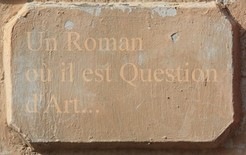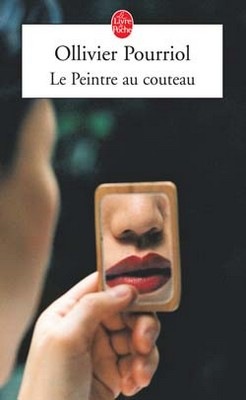Exhibition at La Maison Rouge - The Red House in Paris
Sound and fury, the work of Henry Darger (1892-1973)
La Maison Rouge - The Red House, Paris
June 8 - September 24, 2006
Bruit et fureur (Sound and Fury), the works of Henry Darger, is the first French monographic show devoted to this reclusive American artist who lived alone in a room on Webster Street in Chicago.
It wasn't until 1972, when he left his home for the hospital where he would later pass away, that his landlord Nathan Lerner, himself a photographer and a professor at Chicago's New Bauhaus, discovered the written works and paintings of his eccentric boarder.
This exhibition presents the artist's early work, including five recently restored collages, which have never before been on view.
HENRY DARGER, BIOGRAPHY
Henry Joseph Darger was born in 1892 to a poor Chicago family. Shortly before his fourth birthday, his mother died while giving birth to a baby girl. His father placed the baby in an orphanage the same day.
Until the age of 9, Henry lived alone with his father. At school, he was considered aggressive with his schoolmates and with a tendency towards pyromania. He was subsequently placed in a boys' home and later in an institution for feebly-minded children, where he received minimal education and was mistreated.
At 17, and after several failed attempts, he managed to escape. He moved back to Chicago where, with his father now deceased, he lived alone. He found employment as a janitor in a Catholic hospital.
Henry Darger was a solitary young man who, while working to earn his living, remained cut off in the imaginary world he had elaborated for himself, a means of compensating the lack of affection and poor education he had always known.
For 50 years, Henry Darger shared his days between his job at the hospital and his neighbourhood church, attending up to four services a day. Throughout this time, he never breathed a word about his "other" life, the evenings and nights he entirely devoted to his life's work, The Story of the Vivian Girls, in What is known as The Realms of the Unreal, of the Glandeco-Angelinnian War Storm, Caused by the Child Slave Rebellion.
The Realms of the Unreal
This 15.000-page epic narrative, begun in 1911, recounts life in a kingdom ruled by a general who has seven pretty young daughters, the Vivian Girls. The kingdom falls under attack by surrounding countries, and the valiant Vivian Girls attempt to save the children who have been forced into slavery and violently massacred by enemy soldiers. The story ends with the little girls' victory and the return to an idyllic world, a veritable Garden of Eden. When writing this narrative, Henry Darger was largely inspired by the events of the First World War, by his readings about the American Civil War, but also his own fantasies.
The collages and drawings
Around the 1920s, Henry Darger decided to illustrate his writings. He began with collages, a technique he had experimented with a few years earlier with vast illustrations of battle scenes. He cut figures from newspapers and magazines which he glued onto increasingly large panels.
Considering himself incapable of drawing, he created a method which could be called "proto-pop art". He searched children's books, advertisements, children's clothing catalogues and magazines for illustrations which he traced on carbon paper, then painted with watercolours. Using this technique, he painted ream upon ream of paper, on both sides, which he then glued together to form panels over two metres long. For decades, Henry Darger kept these paintings in his room, though he never dated them.
"[...] While almost all his drawings were done from tracings, they have a value of their own, because they reflect part of Darger's world, which far exceeds that which one might usually expect from a tracing. One feels he really could have produced his own drawings had he not found his creative method, a sort of pictorial "adoption", so significant in itself." -- John M. MacGregor, Henry Darger: In the Realms of the Unreal, Delano Greenridge Editions, 2002.
The force, the violence, the very technique of this unique oeuvre sets it apart in the history of art. Discovered by an artist 35 years ago, it continues to influence the work of the new generations, including the Chapman brothers, Paul Chan, Marcel Dzama and Grayson Perry.
Bibliography
J. M. MacGregor, Henry Darger: In the Realms of the Unreal, Delano Greenridge Editions, 2002.
M. Bonesteel, Henry Darger: Art and Selected Writings, Rizzoli, New York, 2000.
Klaus Biesenbach, Kiyoko Lerner, Henry Darger: Disasters of War, KW Institute of Contemporary Art, Berlin, 2000.
B. D. Anderson & M. Thévoz, Darger: The Henry Darger Collection at the American Folk Art Museum, Harry N. Abrams, New York, 2001.
Catalogue
A catalogue published by Andrew Edlin Gallery in New York accompanies Sound and fury at la maison rouge with text by Edward Madrid Gomez. In French and English, 80 pages, illustrated.
Related events
In the Realms of the Unreal The Mystery of Henry Darger, 82 min. film about the life and work of Henry Darger, directed by Jessica Hu in 2003, will be screened in parallel to the exhibition.
Aknowledgment of The Red House: This exhibition could not have taken place without the kind contribution of Mrs Kiyoko Lerner, custodian of Henry Darger's estate, who opened her archives in Chicago and has allowed to show its treasures.
SOUND AND FURY, THE WORK OF HENRY DARGER (1892-1973)
June 8 - September 24, 2006
La Maison Rouge - The Red House
Antoine de Galbert Foundation
10, bld de La Bastille –
75012 Paris
Also on view from June 8 through September 2006 at The Red House, Paris:
An exhibition of the french artist Nicolas Darrot







